Burroughs
Burroughs Adding Machine Company, 6071 Second Av., Detroit, Michigan, U.S.A.
In 1886 the American Arithmometer Company was founded in St. Louis to manufacture the mechanical add-listing machine invented by William Seward Burroughs. These precision machines were very successful, and in 1904 the company
moved to larger premises in Detroit. The following year the name was changed to Burroughs Adding Machine Company.
Other manufacturing plants included those at Nottingham, England (1898); Strathleven, Scotland (1953); and
Villiers-Ecalles, Normandy, France (1959).
The early Burroughs mechanical calculators were large machines characterised by having glass panels in the sides so the mechanism could be seen. This became fashionable in other company's machines of the time. There was constant development in the mechanical calculators through to the 1960s, when Burroughs converted to electronic desk calculators. They had an agreement to sell in Europe electronic calculators made by Sharp in Japan, but also decided to make their own electronic desk calculators at their factory in France.
The company was heavily involved in accounting machines, had early involvement in computing equipment, and the calculators appear to have been dropped from its product lines in the mid to late 1970s. It only manufactured desktop electronic machines, and no hand-held calculators.
In 1986 Burroughs Corporation and Sperry Corporation merged to form Unisys Corporation.
Examples of Burroughs calculators
1) Full-keyboard Mechanical 'Add-listers'
Burroughs specialised in 'Add-listers'—mechanical adding machines that printed the calculations on a roll of listing paper.
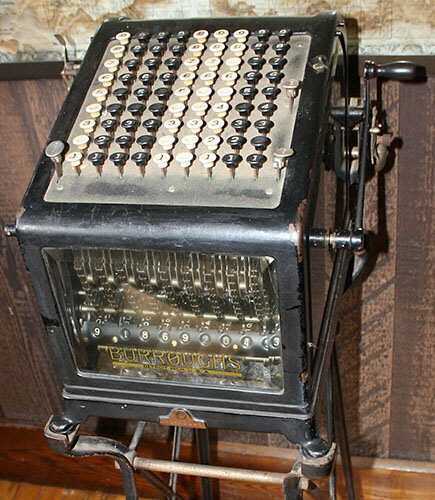
Burroughs 'visible' add-lister
Dating from early in the 20th century, this full-keyboard mechanical adding machine prints the calculations on a paper roll at the rear.
The keys latch in, allowing the entered number to be checked, until the lever is pulled which enters the number into the accumulator and prints it, or prints the total or subtotal.
The glass panels allow the mechanism to be seen operating.
Cropped from an image attributed to Royalbroil, CC BY-SA 3.0 https://creativecommons.org/licenses/by-sa/3.0, via Wikimedia Commons
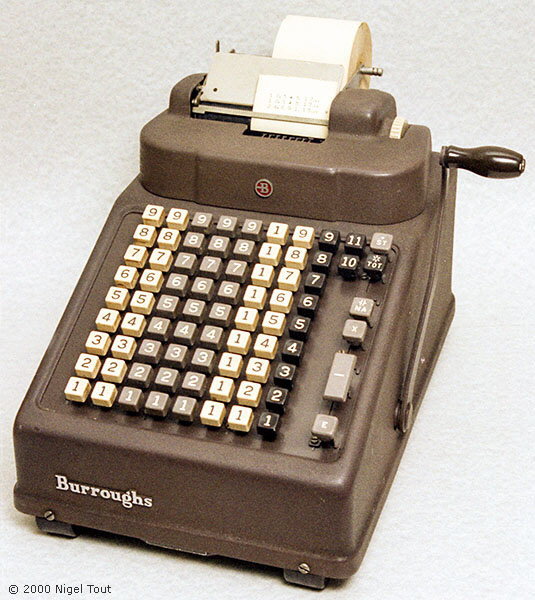
Burroughs model P
This is a later full-keyboard mechanical add-lister made for calculations in the old British Sterling currency (£sd).
Models similar to this were made for many years until ousted by electronic printing calculators in the 1970s.
This is a featured calculator.
2) 10-key Mechanical 'Add-listers'
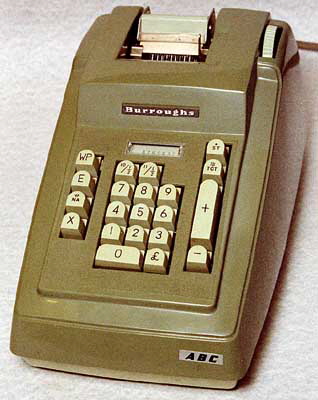
ABC Universal AP series J
This is another add-lister but it is a 10-key version, since it has the keys 0 to 10, and not the full-keyboard type. This model is for the British pre-decimal £sd currency, so has extra '10' and '11' keys.
This is a featured calculator in the Non-Decimal Calculators section.
3) Key-operated Mechanical Adding Machines
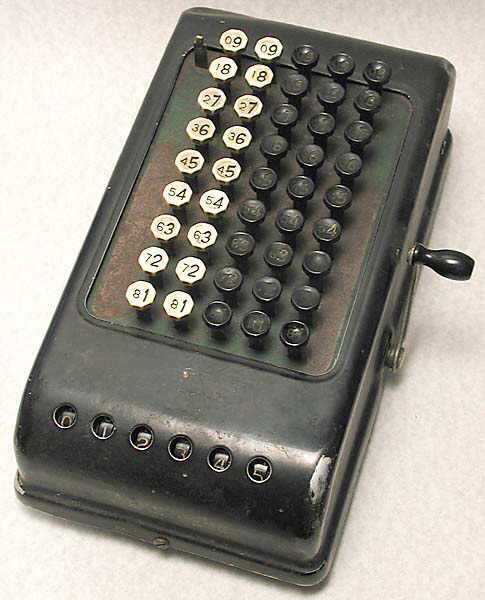
Burroughs E5
This is a 'Comptometer'-type mechanical adding machine. It is key-operated, that is pressing any key immediately adds that number to the total. The handle on the right is used for clearing the accumulator (windows at the bottom, here displaying 012345).
4) Electronic Calculators
The first Burroughs electronic calculators were manufactured by Sharp in Japan. Later models were manufactured at Burroughs own plant in France.
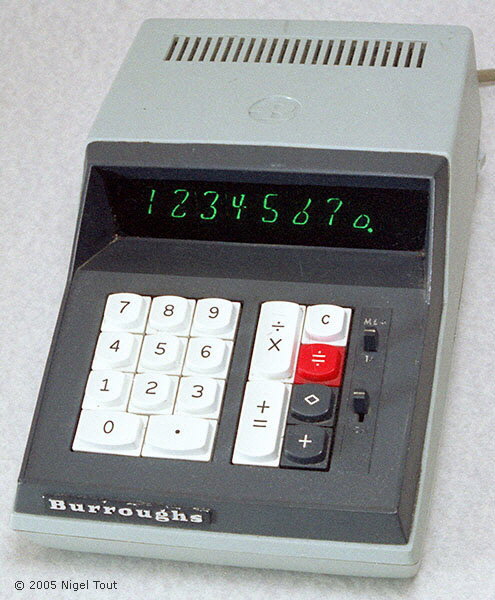
Burroughs C3260
One of the early Burroughs electronic calculators manufactured for them by Sharp in Japan. It has a very distinctive early 'Itron' vacuum-fluorescent display.
This is a featured calculator.
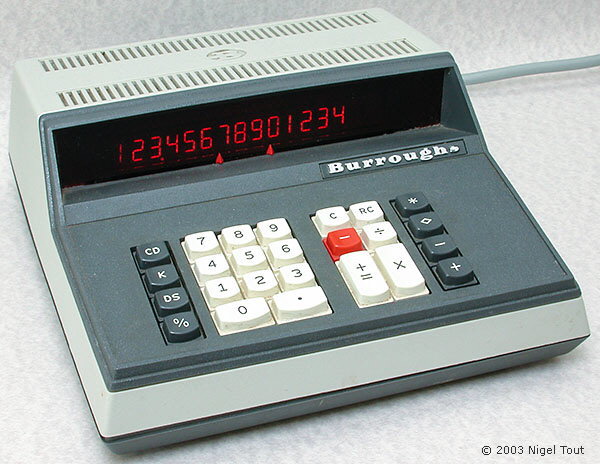
Burroughs C5205
This machine, with a flat 'Panaplex' discharge display dates from about 1973 and is likely to have been manufactured in the Burroughs factory in France.
This is a featured calculator.
5) Burroughs displays
Burroughs were notable for developing the 'Nixie' display tube, widely used in early electronic calculators, and the later 'Panaplex' flat display.
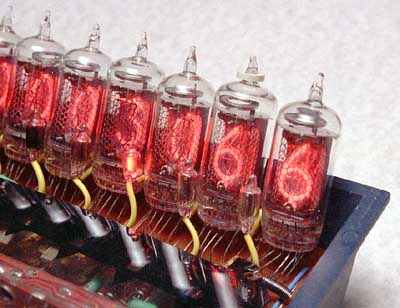
'Nixie' type display tubes of an ANITA 1011LSI calculator in use.

A Burroughs 'Panaplex' display in use in a Keystone 88 hand-held calculator of about 1974. The digits are larger than those of LED displays of the time.
For further photographs of Burroughs calculators see the Calculator Photo Library on this site.
Michael Hancock has produced an interesting early history of the Burroughs Adding Machine Company and its calculators at http://www.xnumber.com/xnumber/hancock7.htm.
See also "Burroughs Adding Machine History": A film on YouTube which shows Burroughs adding and accounting machines, and computers being manufactured and used at https://www.youtube.com/watch?v=ZBkZI0jYi3I.
Information about the development of the Burroughs mechanical calculators, with an emphasis on the British operations, can be found in the book:
"Total to Date: The Evolution of the Adding Machine: The Story of Burroughs",
by Bryan Morgan, published in 1953 by Burroughs Adding Machine Limited London.
Calculator Companies
Vintage Calculators
Text & photographs copyright, except where stated otherwise, © Nigel Tout 2000-2026.